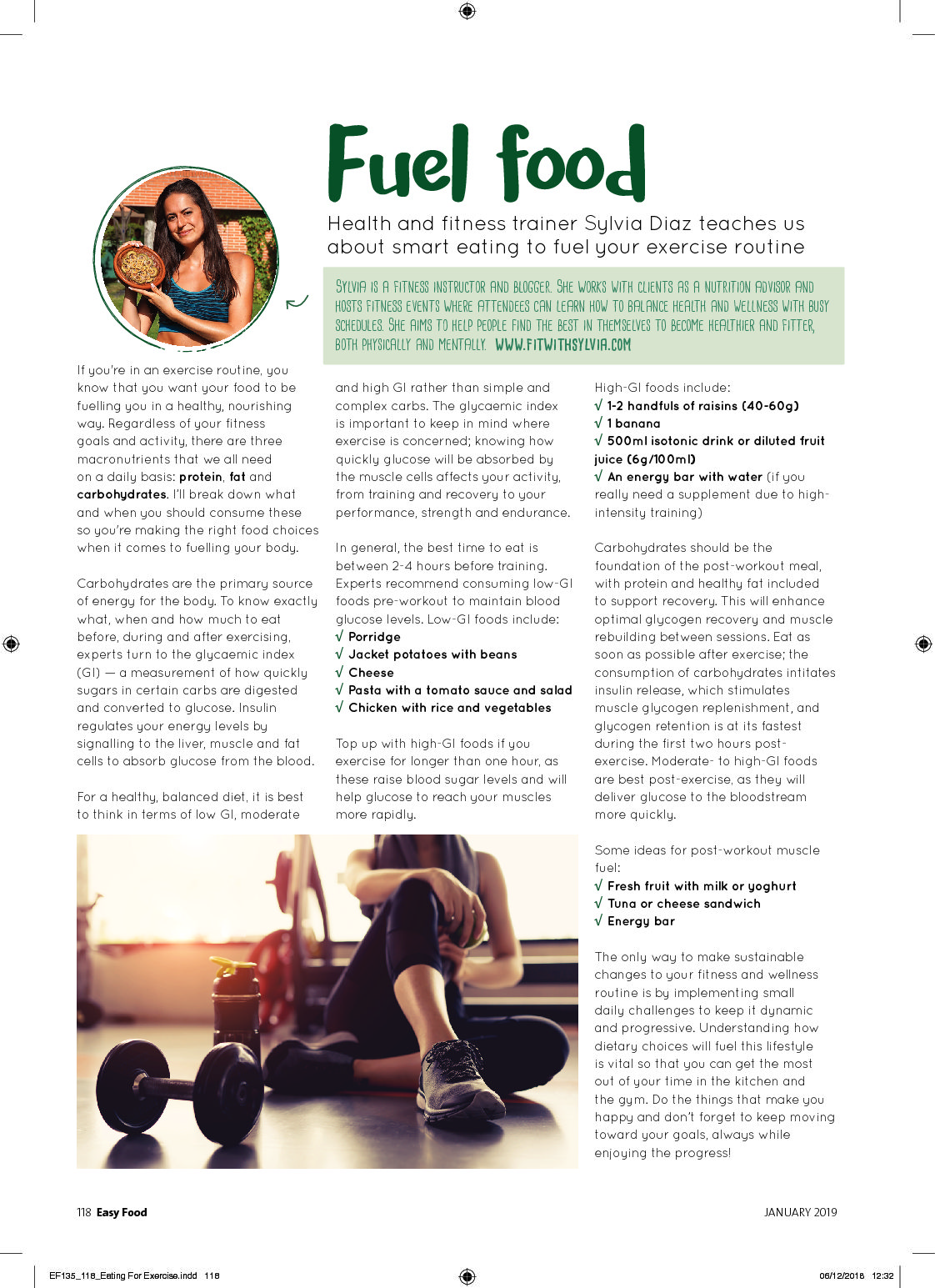WHAT TO EAT FOR EXERCISING?
INTRODUCTION
Who does not want to fuel their body in healthy, wholesome way to get the most out of exercise?
The only way to make sustainable changes is implementing some daily challenges to keep the progress as an enjoyable routine.
Regardless of goals and activity, intake of two of the three macronutrients that we need on a daily basis, protein and fat, stays fairly constant. However, carbohydrate is the macronutrient we manipulate most commonly in nutrient timing because it is considered the primary source of energy in the human body.
Insulin helps control blood glucose levels by signaling the liver and muscle and fat cells to take in glucose from the blood. Insulin therefore helps cells to take in glucose to be used for energy.
But to exactly know what, when and how much to eat before, during and after exercising, we use the glycaemic index, which shows how quickly the sugar of certain carbs is digested and converted to glucose.
To eat a healthy diet, it is better to think in terms of low GI, moderate and high GI rather than simple and complex carbs. High GI foods can maximise glycogen replenishment post-workout and Low GI foods pre-workout to maintain blood glucose levels.
This index is important as far as exercise is concerned. Knowing how quickly glucose can be taken up the muscle cells makes a difference to training and recovery It will affect performance, strength and endurance in the long term.

CONTENT
Ideally, the best time to eat is between 2 and 4 hours before training. Focus on low GI foods to maintain blood glucose levels, like porridge, jacket potatoes with beans, chicken or cheese, pasta with tomato base sauce and salad, or rice with chicken and vegetables. Then, top up with high GI foods if you exercise for more than 1 hour as they raise blood sugar levels and will reach the muscle rapidly. Some examples: 1 to 2 handfuls of raisins (40-60g), 1 banana, 500ml isotonic drink or diluted fruit juice (6g/100ml) or an energy bar with water if you really need a supplement due to high intensity training.
Eat as soon as possible after exercise as glycogen storage is faster during the first 2 hours post exercise. Consumption of carbs stimulates insulin release. It is even recommended to eat each and every 2 hours.
Moderate to high IG foods are the best post-exercise, as they will deliver glucose to the bloodstream faster. The combination of protein and carbs promotes the release of insulin which stimulates muscle glycogen replenishment. Some examples: fresh fruit with milk or yogurt afterwards as a post-workout in the morning, tuna or cottage cheese sandwich, and sport bar or meal replacement shake as quicker options.
Carbohydrates should be the foundation of the post-workout meal with protein and some healthy fat supporting recovery. This will enhance optimal glycogen recovery and muscle rebuilding between sessions.
CONCLUSION
Feed and allow yourself in moderation.
Make sure you always have the “key three macronutrients” on your plate: protein, healthy fat, and carbohydrates.
Do the things that make you happy and do not forget to keep moving toward your goals while enjoying the progress.
